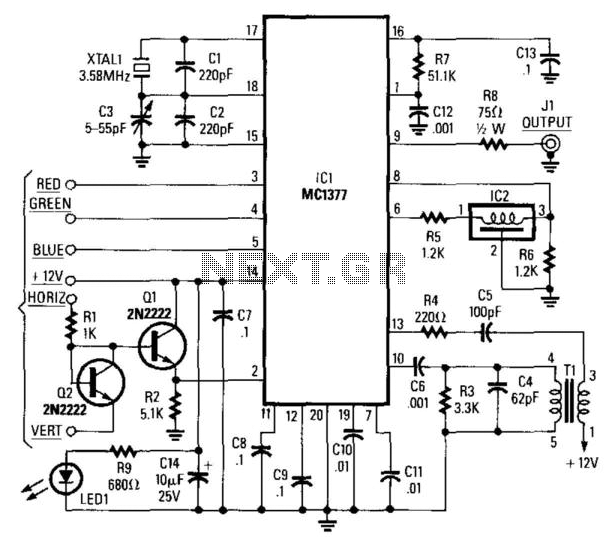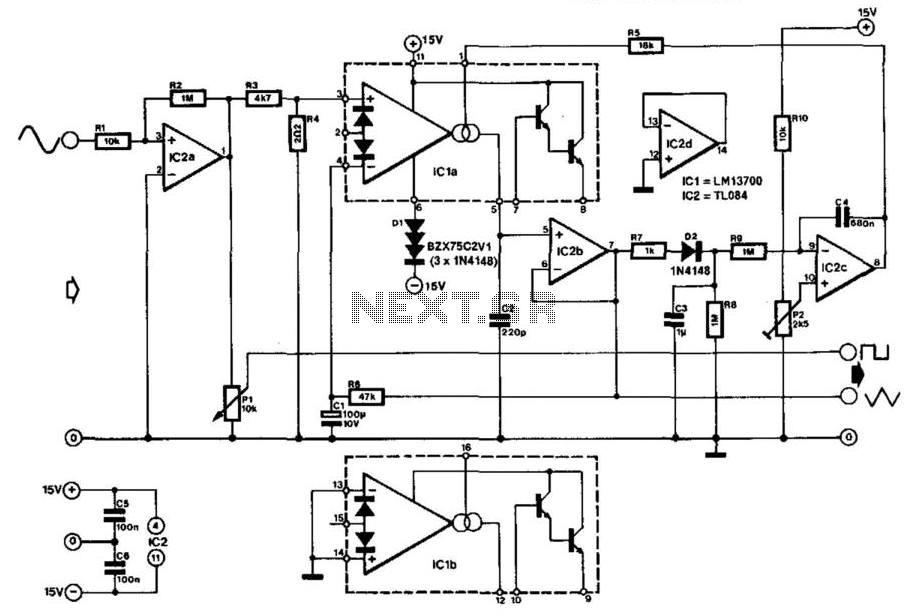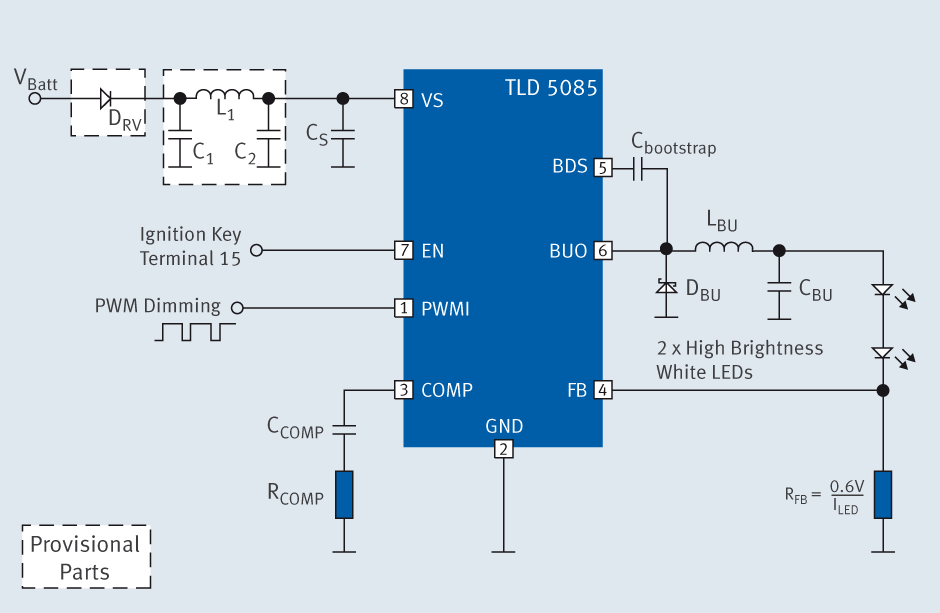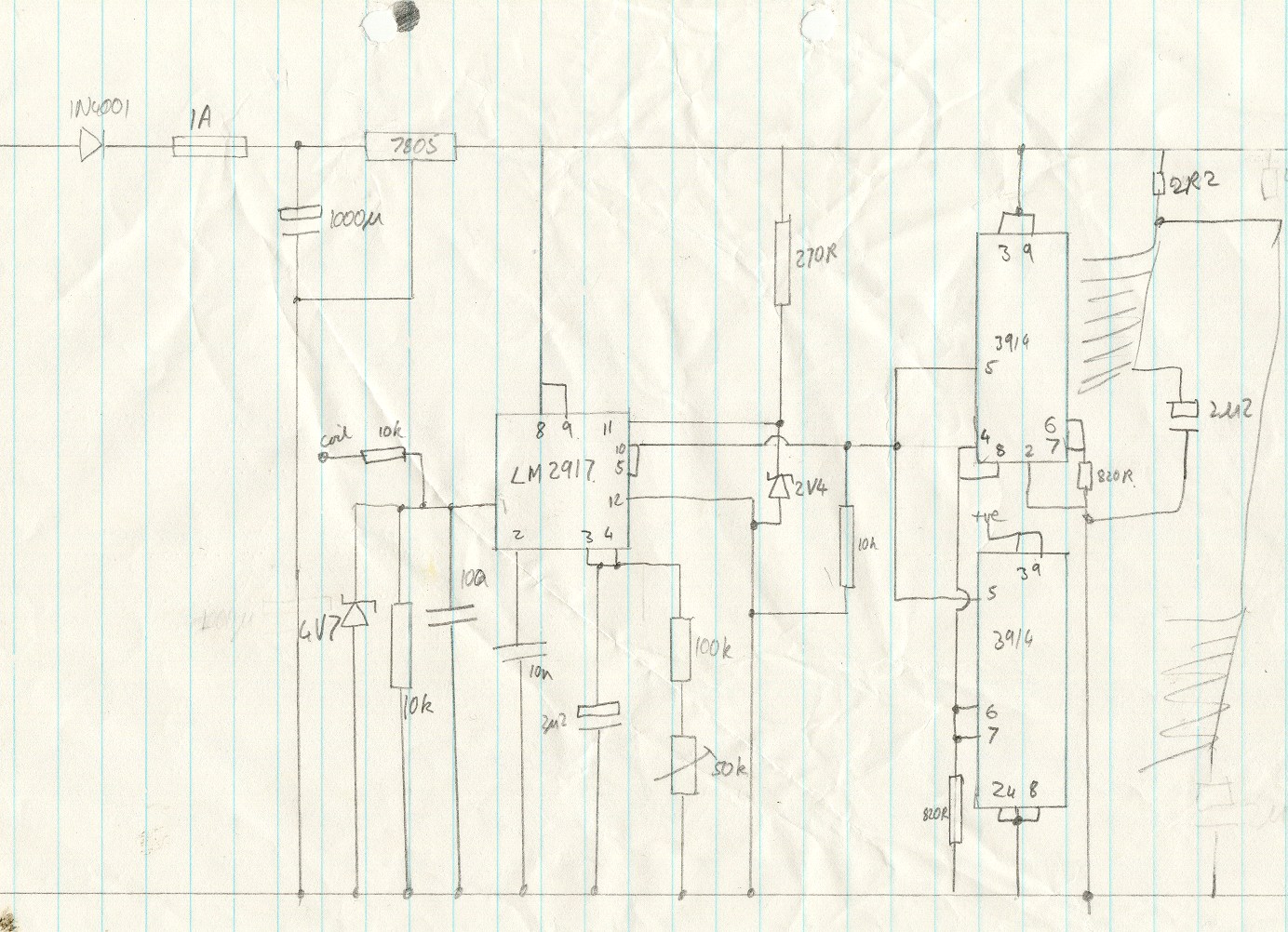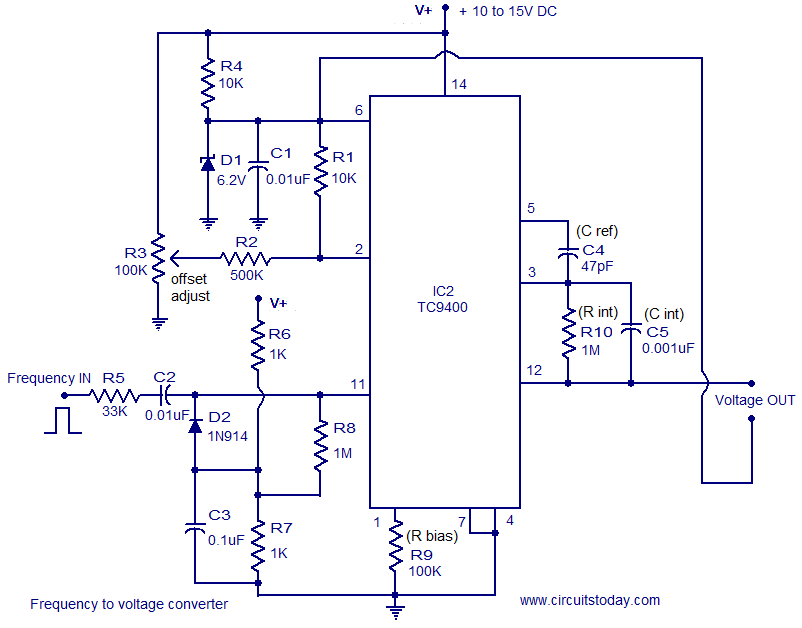
converter 12 vdc to 230 vac or inverter
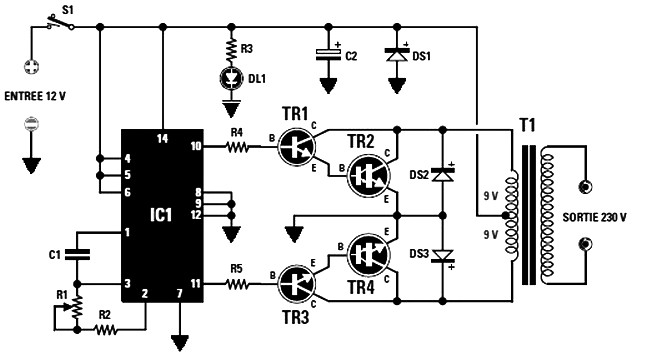
The final power transistors TR2 and TR4 must be mounted on appropriately sized heatsinks to prevent overheating. Suitable options include MJ4033, MJ3007, or other NPN transistors. The maximum power output is dependent on the transformer T1's core size. For a 50 VA transformer, the secondary output can provide 230 V at 0.2 A (resulting in a total current consumption of 4 A). For a 90 VA transformer, the secondary output can deliver 230 V at 0.4 A (with a total current consumption of 7 A). The schematic diagram pertains to a circuit designed for converting 12 V DC to 230 V AC, functioning as a power supply inverter. Further details regarding the power supply circuit diagram can be found on the corresponding page.
The described circuit involves a power inverter that converts a low-voltage direct current (DC) input into a high-voltage alternating current (AC) output. The transistors TR2 and TR4 play a crucial role in the switching process, facilitating the conversion by rapidly turning on and off. Proper thermal management is essential; thus, the selection of an adequately sized heatsink is critical to ensure reliable operation and prevent thermal failure of the transistors.
The transformer T1 is a vital component in this circuit, as it steps up the voltage from the secondary winding to the desired output level. The transformer’s core size directly influences the maximum power output, with the specifications indicating that a 50 VA transformer can support a secondary current of 0.2 A, while a 90 VA transformer can handle 0.4 A. The total current drawn from the inverter should be considered, as it affects the overall efficiency and thermal performance of the circuit.
When designing the inverter circuit, attention must be paid to the layout and component selection, ensuring that all parts are rated for the expected voltages and currents. The efficiency of the inverter can be optimized by selecting high-quality components and minimizing losses in the circuit. Additionally, protective measures such as fuses or circuit breakers should be included to safeguard against overcurrent conditions.
In conclusion, this power inverter circuit is a practical solution for converting 12 V DC to 230 V AC, suitable for various applications. The careful selection of transistors, transformer specifications, and thermal management strategies are essential for achieving reliable and efficient performance in the designed circuit.The two final power of TR2-TR4 should be mounted on heatsink the right size, otherwise they will overheat. You can choose from MJ4033 MJ3007 or more, provided that the NPN. The maximum power output that can be used depending on the size of the core of the transformer T1, the VA is: with 50 VA can be taken in the secondary 230 V 0.
2 A (current consumed by the end will be 4 A) with 90 VA can be taken on the secondary 230 V 0. 4 a (current consumed by the end will be 7 A). The schematic diagram come from circuit: Converter 12 Vdc to 230 Vac or Inverter power supply. Go to that page to read the explanation about above power supply related circuit diagram. 🔗 External reference
The described circuit involves a power inverter that converts a low-voltage direct current (DC) input into a high-voltage alternating current (AC) output. The transistors TR2 and TR4 play a crucial role in the switching process, facilitating the conversion by rapidly turning on and off. Proper thermal management is essential; thus, the selection of an adequately sized heatsink is critical to ensure reliable operation and prevent thermal failure of the transistors.
The transformer T1 is a vital component in this circuit, as it steps up the voltage from the secondary winding to the desired output level. The transformer’s core size directly influences the maximum power output, with the specifications indicating that a 50 VA transformer can support a secondary current of 0.2 A, while a 90 VA transformer can handle 0.4 A. The total current drawn from the inverter should be considered, as it affects the overall efficiency and thermal performance of the circuit.
When designing the inverter circuit, attention must be paid to the layout and component selection, ensuring that all parts are rated for the expected voltages and currents. The efficiency of the inverter can be optimized by selecting high-quality components and minimizing losses in the circuit. Additionally, protective measures such as fuses or circuit breakers should be included to safeguard against overcurrent conditions.
In conclusion, this power inverter circuit is a practical solution for converting 12 V DC to 230 V AC, suitable for various applications. The careful selection of transistors, transformer specifications, and thermal management strategies are essential for achieving reliable and efficient performance in the designed circuit.The two final power of TR2-TR4 should be mounted on heatsink the right size, otherwise they will overheat. You can choose from MJ4033 MJ3007 or more, provided that the NPN. The maximum power output that can be used depending on the size of the core of the transformer T1, the VA is: with 50 VA can be taken in the secondary 230 V 0.
2 A (current consumed by the end will be 4 A) with 90 VA can be taken on the secondary 230 V 0. 4 a (current consumed by the end will be 7 A). The schematic diagram come from circuit: Converter 12 Vdc to 230 Vac or Inverter power supply. Go to that page to read the explanation about above power supply related circuit diagram. 🔗 External reference
Warning: include(partials/cookie-banner.php): Failed to open stream: Permission denied in /var/www/html/nextgr/view-circuit.php on line 713
Warning: include(): Failed opening 'partials/cookie-banner.php' for inclusion (include_path='.:/usr/share/php') in /var/www/html/nextgr/view-circuit.php on line 713
